All in a Day's work: Twentytwentyone and the Robin and Lucienne Day Foundation launch '100 Designs' poster
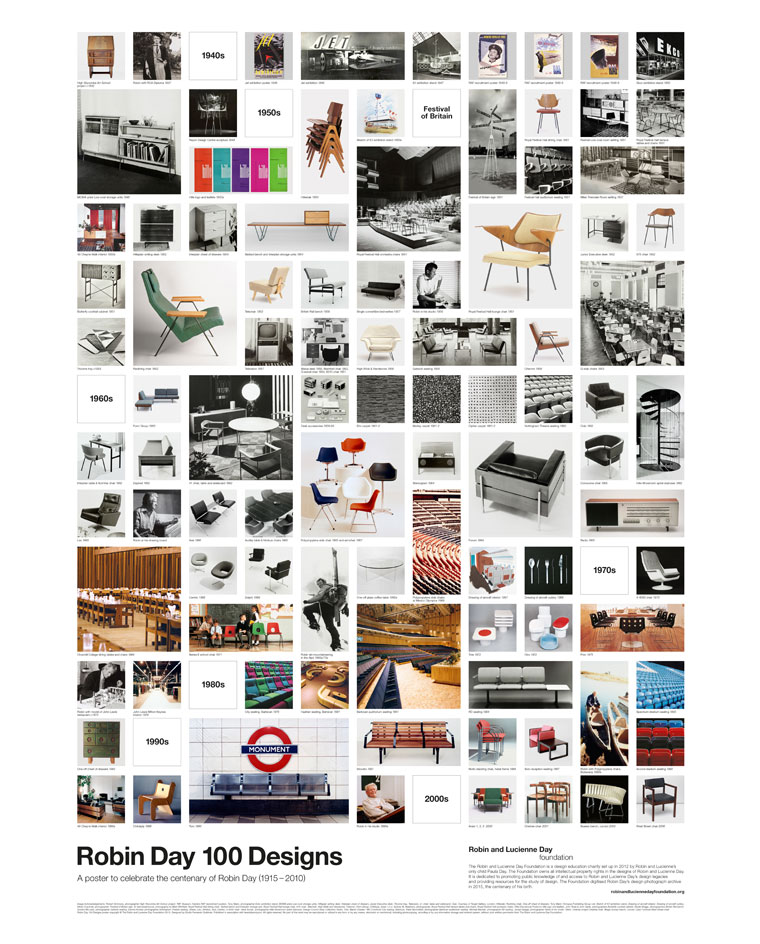
For the second time this month, the Islington-based design store Twentytwentyone has paid tribute to the centenary of the birth of Robin Day, this time with the production of the ‘Robin Day 100 Designs’ poster.
Designed by Studio Fernando Gutierrez and launched with the Robin and Lucienne Day Foundation – set up in 2012 by the couple’s daughter Paula – the poster features images of 100 of Day's seminal designs, as well as a wealth of portraiture; many of the images are drawn from the Foundation’s archive and have never been seen before.
Day, who died in 2010, was one of 20th century British furniture design's most lauded practitioners. He received his big break in 1948, when he and fellow designer Clive Latimer won the International Competition for Low-Cost Furniture at the Museum of Modern Art (MoMA), an accolade that kickstarted an estimable 70 year career that saw Day design the Royal Festival Hall’s seating for the Festival of Britain in 1951 and produce a prolific body of work for clients such as Hille (in particular the hugely successful 1963 'Polypropylene Chair'), Pye, BOAC and the Barbican. He was awarded the OBE in 1983.
Day’s meticulous approach to furniture design was both practically and philosophically driven. As well as stating that 'a good design should fulfil its purpose well, be soundly constructed and should express in its design this purpose and construction', the designer also maintained an earnest belief in the power of design to fundamentally improve the lives of those around him.
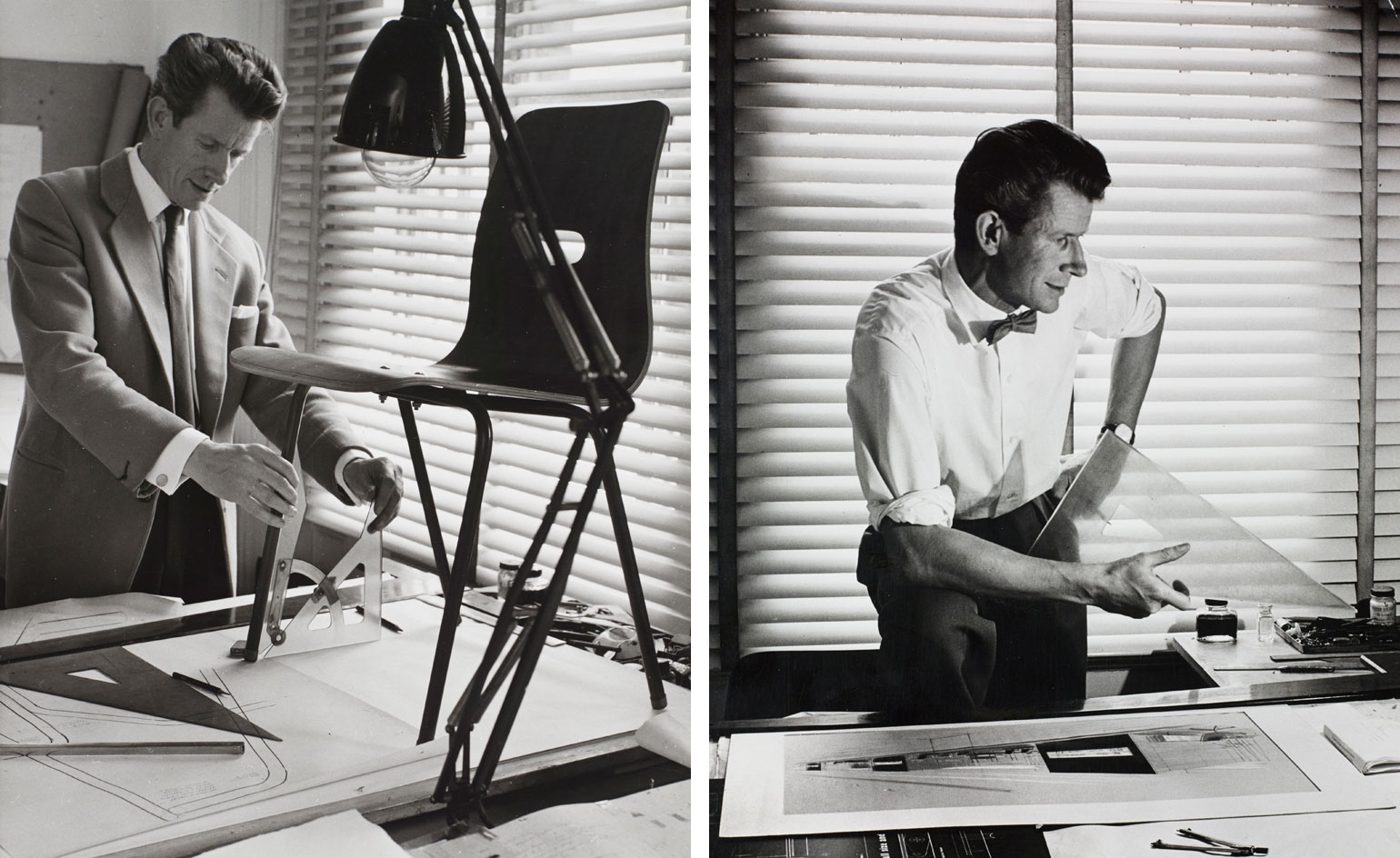
Pictured left: Robin Day working on the 'Q-stak Chair', 1953 – a one-piece moulded design with economy in mind. Courtesy of the Robin and Lucienne Day Foundation. Pictured right: Day in his studio, c. 1949. Courtesy of the Robin and Lucienne Day Foundation
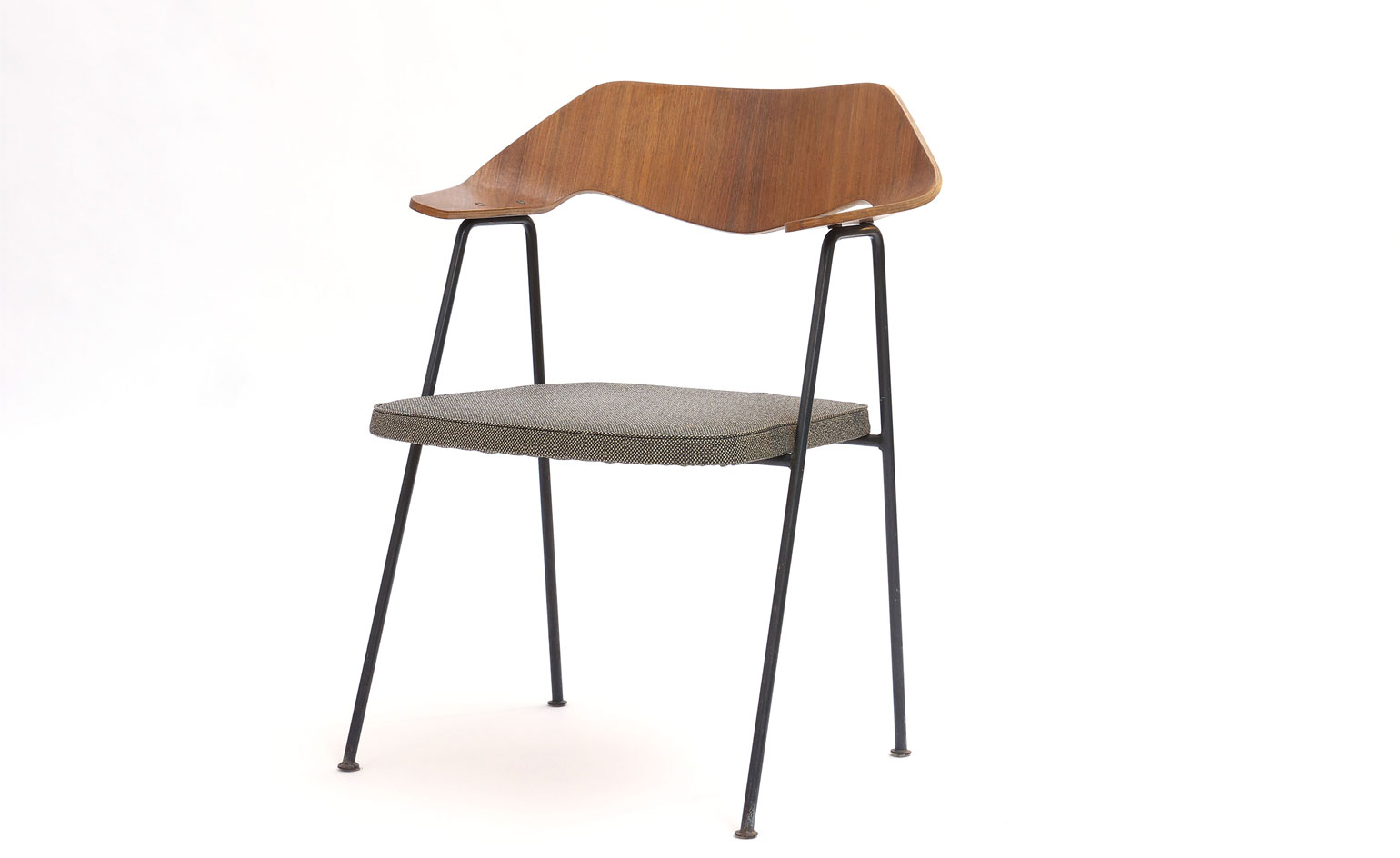
The pared-down sculptural design for the '675 Chair', 1952, was one of Day's favourites. Courtesy of twentytwentyone
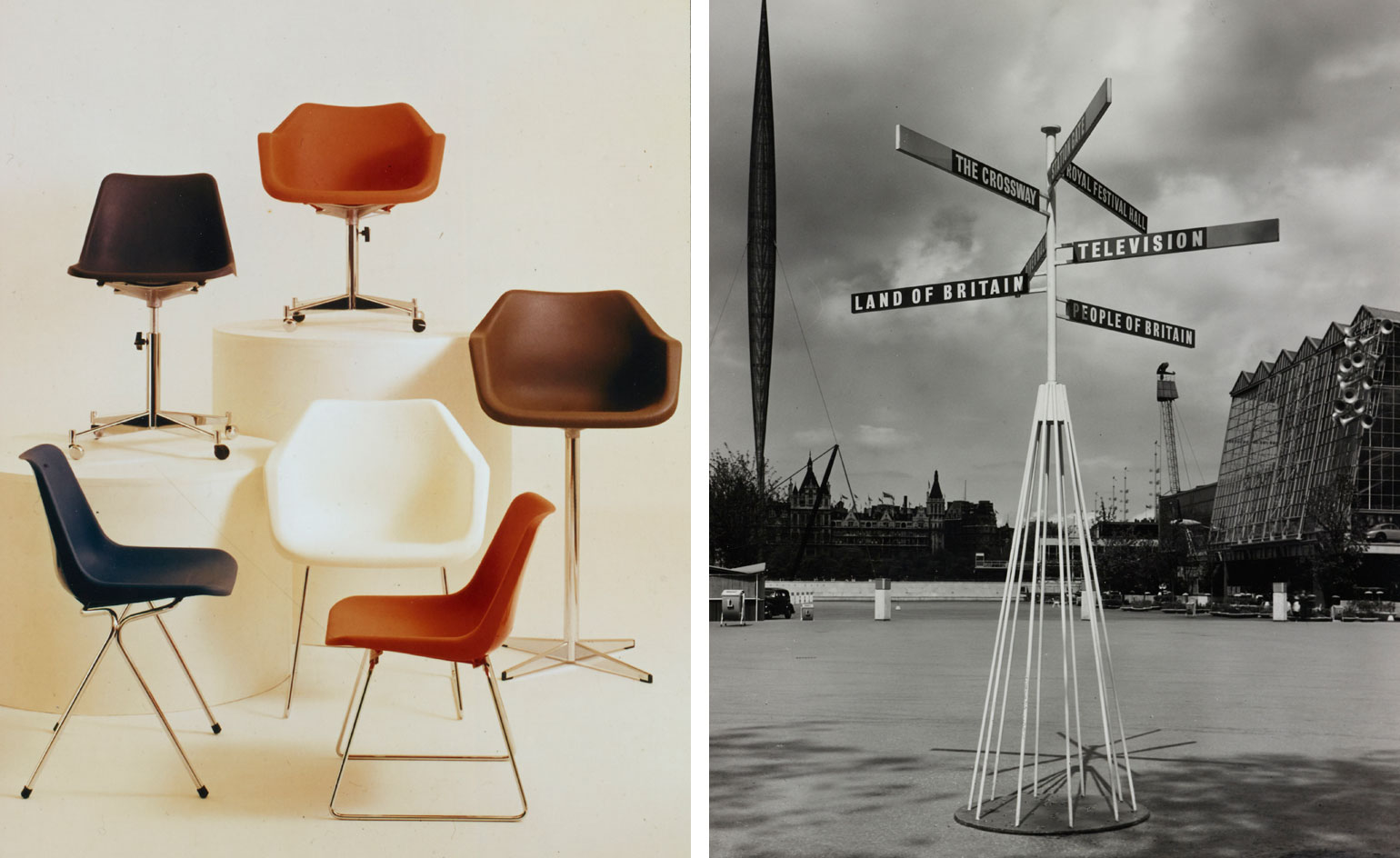
Left: 'Polypropylene Chair' mark II, 1964 and 'Polypropylene Armchair', 1967. Day and Hille pioneered the use of the material for seating. Courtesy of the Robin and Lucienne Day Foundation. Pictured right: Day designed signage, such as this example, for the Festival of Britain, 1951, as well as furniture. Courtesy of Design Research Unit
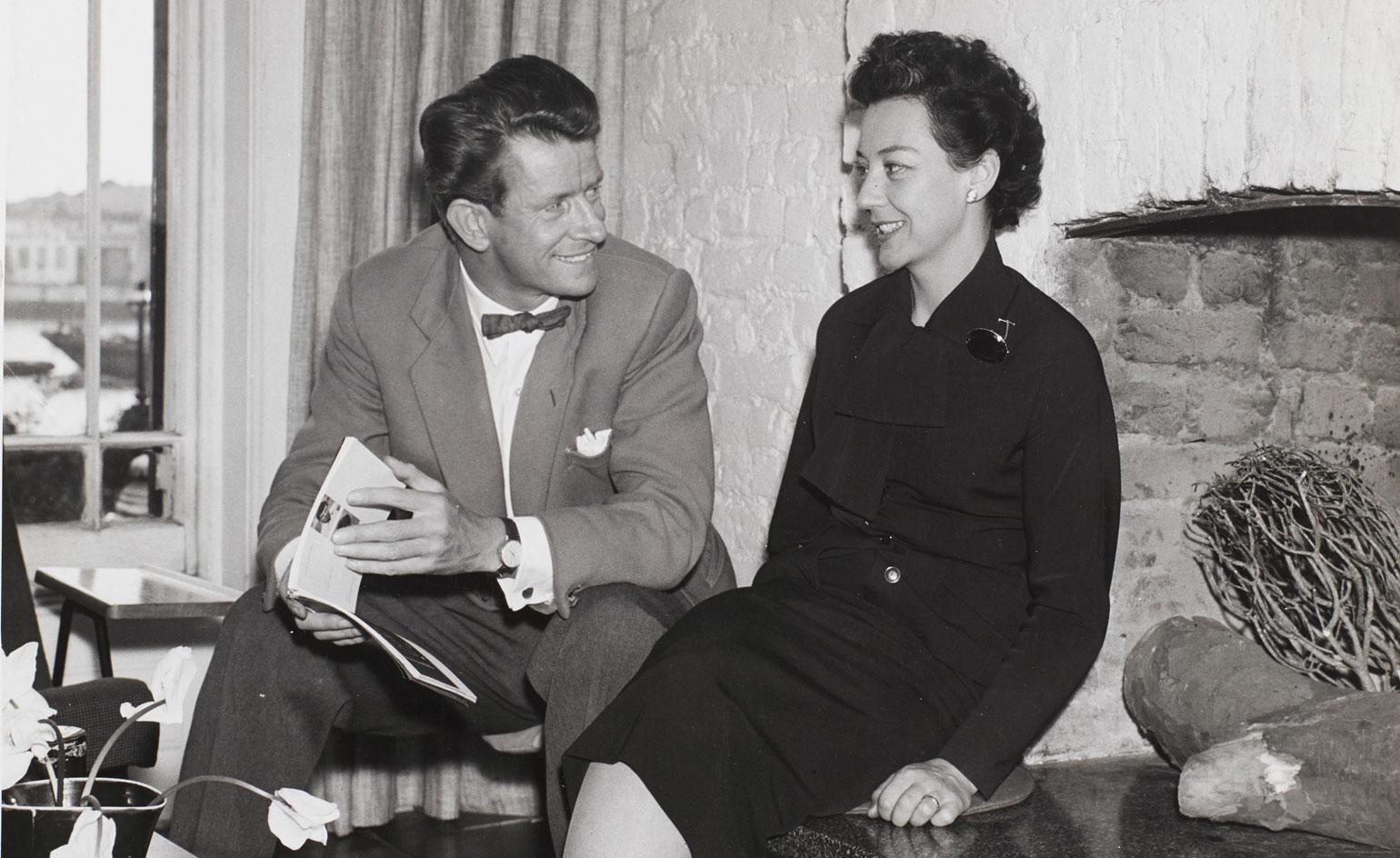
Robin and Lucienne Day in their legendary ‘Contemporary’ Chelsea home in 1956. Courtesy of the Robin and Lucienne Day Foundation

Robin and Lucienne Day worked as joint design consultants to John Lewis from 1962 – 1987. Pictured is Robin with a model of the John Lewis Oxford Street restaurant, c. 1973. Courtesy of the Robin and Lucienne Day Foundation
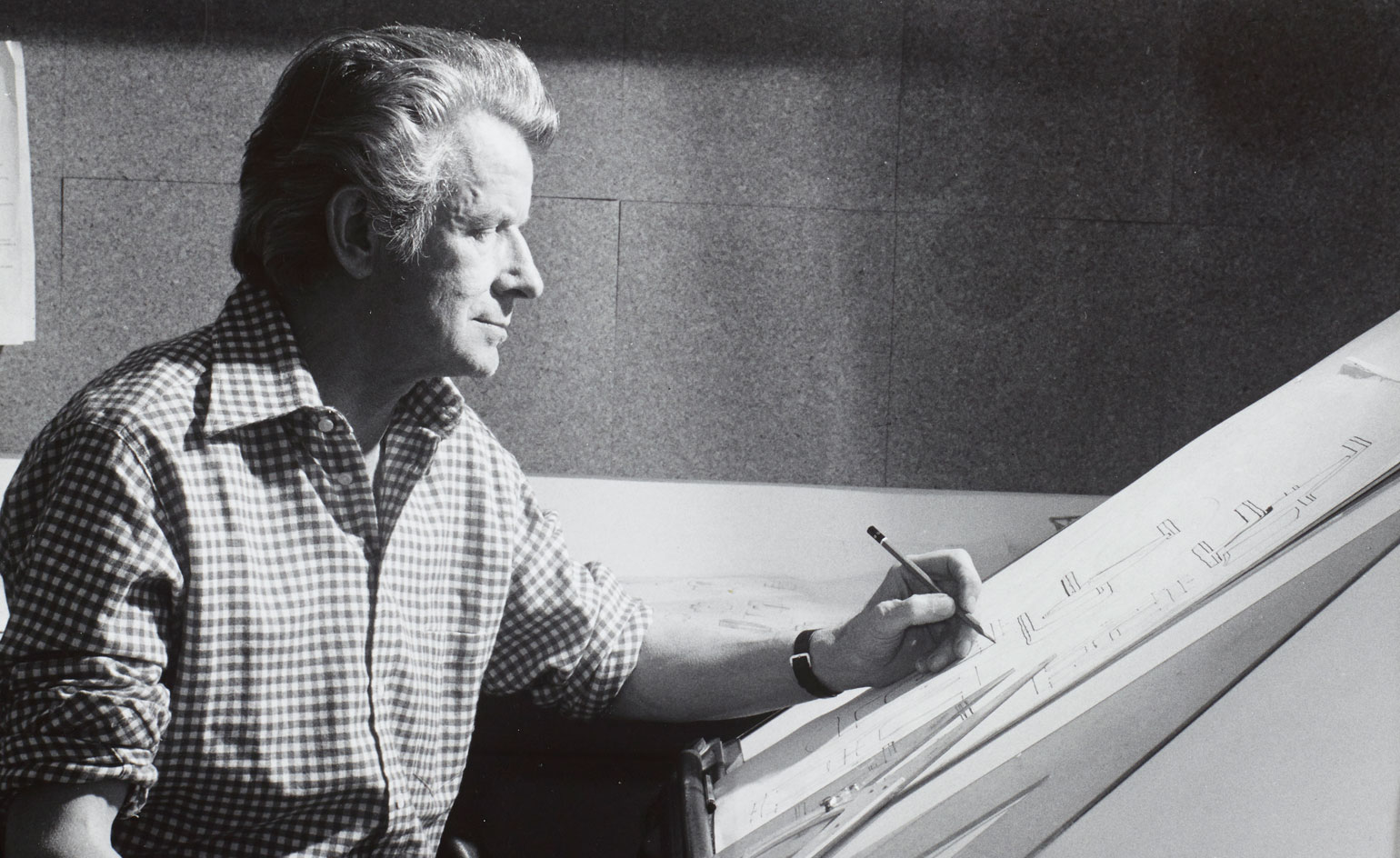
Robin Day working at his drawing board. Courtesy of the Robin and Lucienne Day Foundation

Not just a designer, Day had a passion for the mountains and outdoor adventure (pictured here in the Alps in the 1970s). Courtesy of the Robin and Lucienne Day Foundation
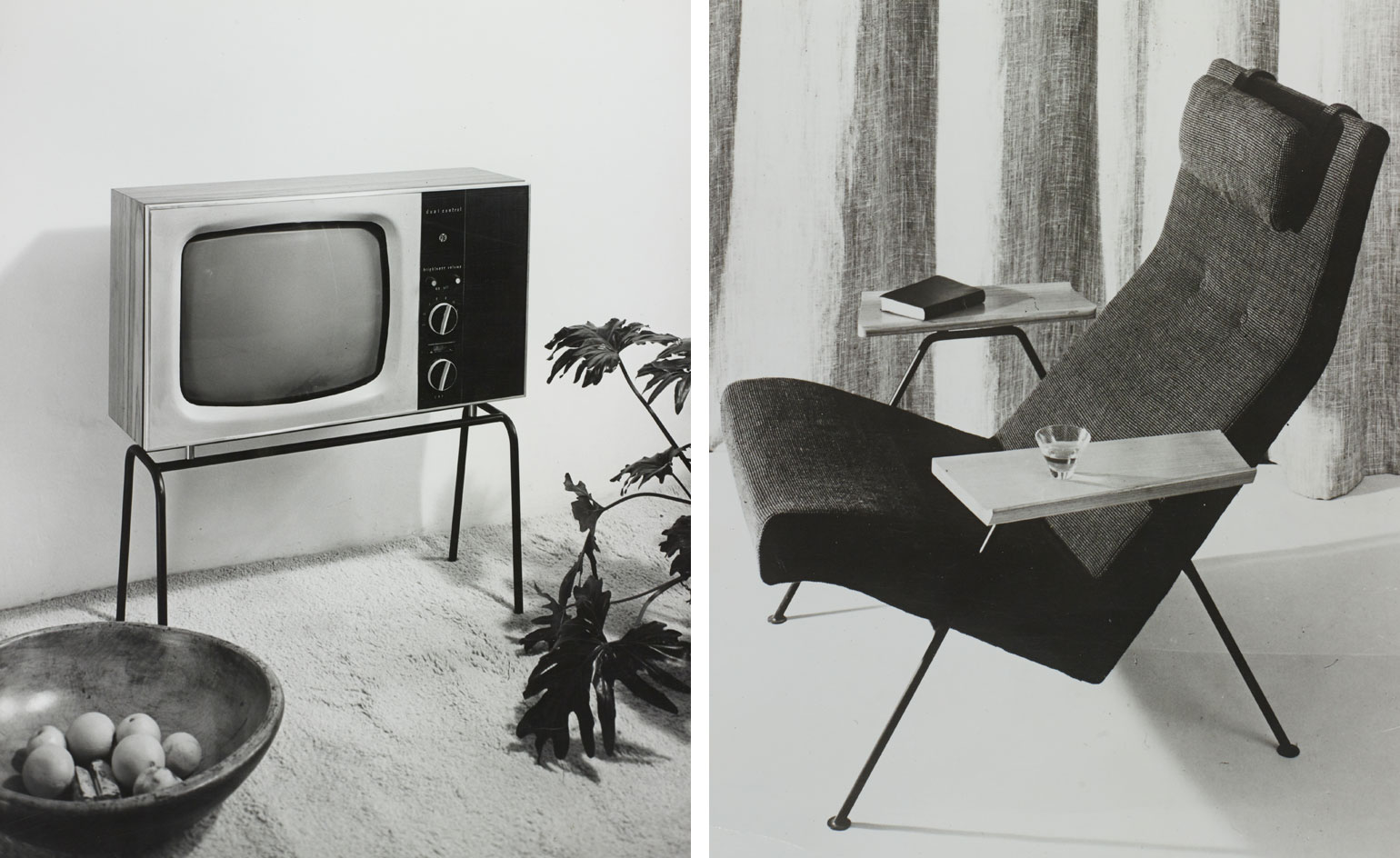
Left: Day designed a number of radios and television sets for electronics firm Pye. Photography: Mann Bros. Courtesy of the Robin and Lucienne Day Foundation. Pictured right: Day's original 'Reclining Chair', 1952 – now rebooted as a centenary edition by Twentytwentyone. Courtesy of the Robin and Lucienne Day Foundation
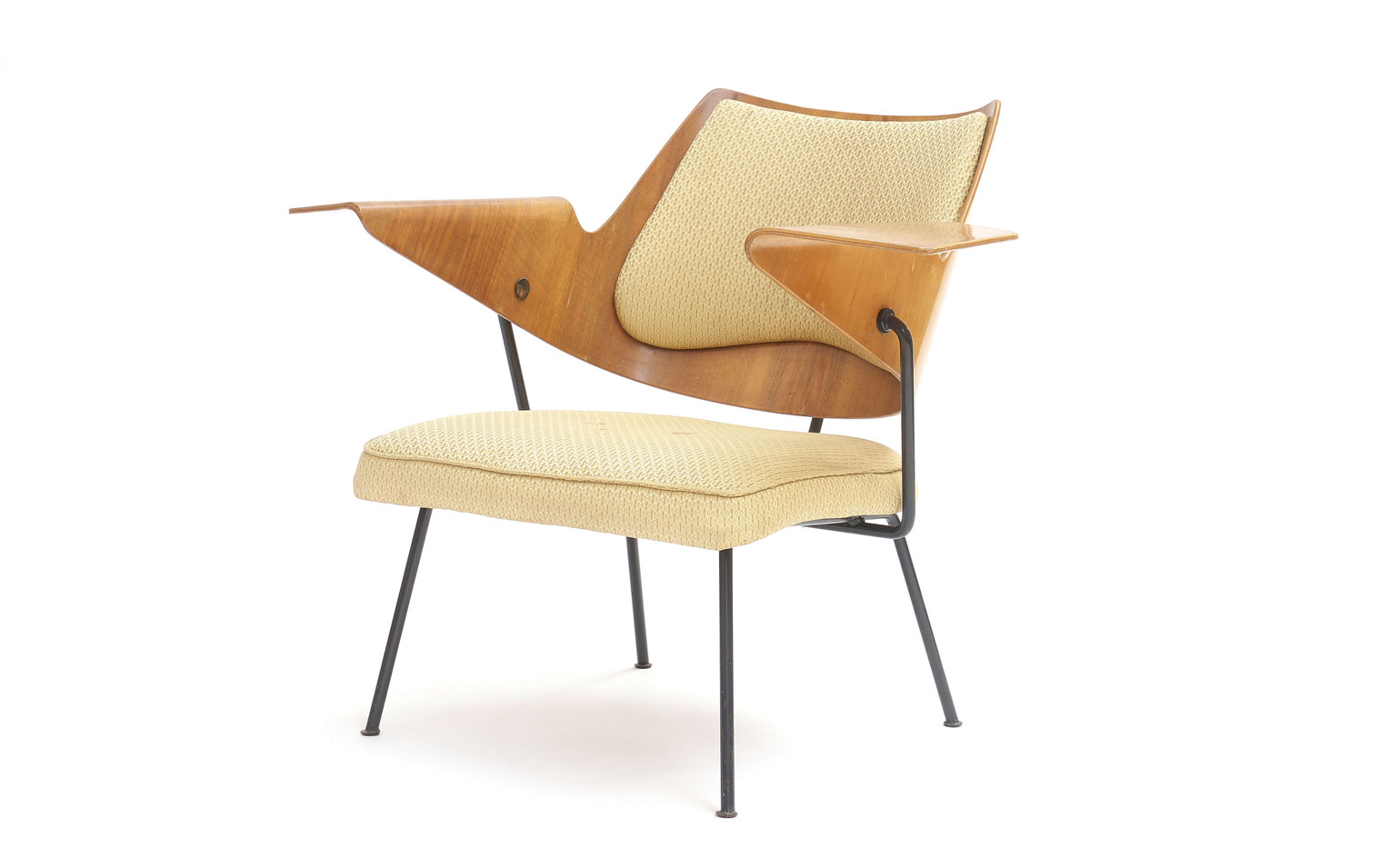
Robin Day designed all the seating for the Royal Festival Hall, the first major new modern building after the Second World War. Pictured is the 'Lounge Chair' he created for the space in 1951. Courtesy of twentytwentyone

Day's design for the 'Forum Armchair', 1964, challenged contemporary convention by exposing the timber frame. Courtesy of the Robin and Lucienne Day Foundation

Design for a better future: Day’s polypropylene 'Series E School Chair' is still widely used in classrooms. Courtesy of Hillle Ltd and the Robin and Lucienne Day Foundation

Day in a canoe fitted with his 'Polypropylene Chair' shells, Botswana, 1980s. Courtesy of the Robin and Lucienne Day Foundation
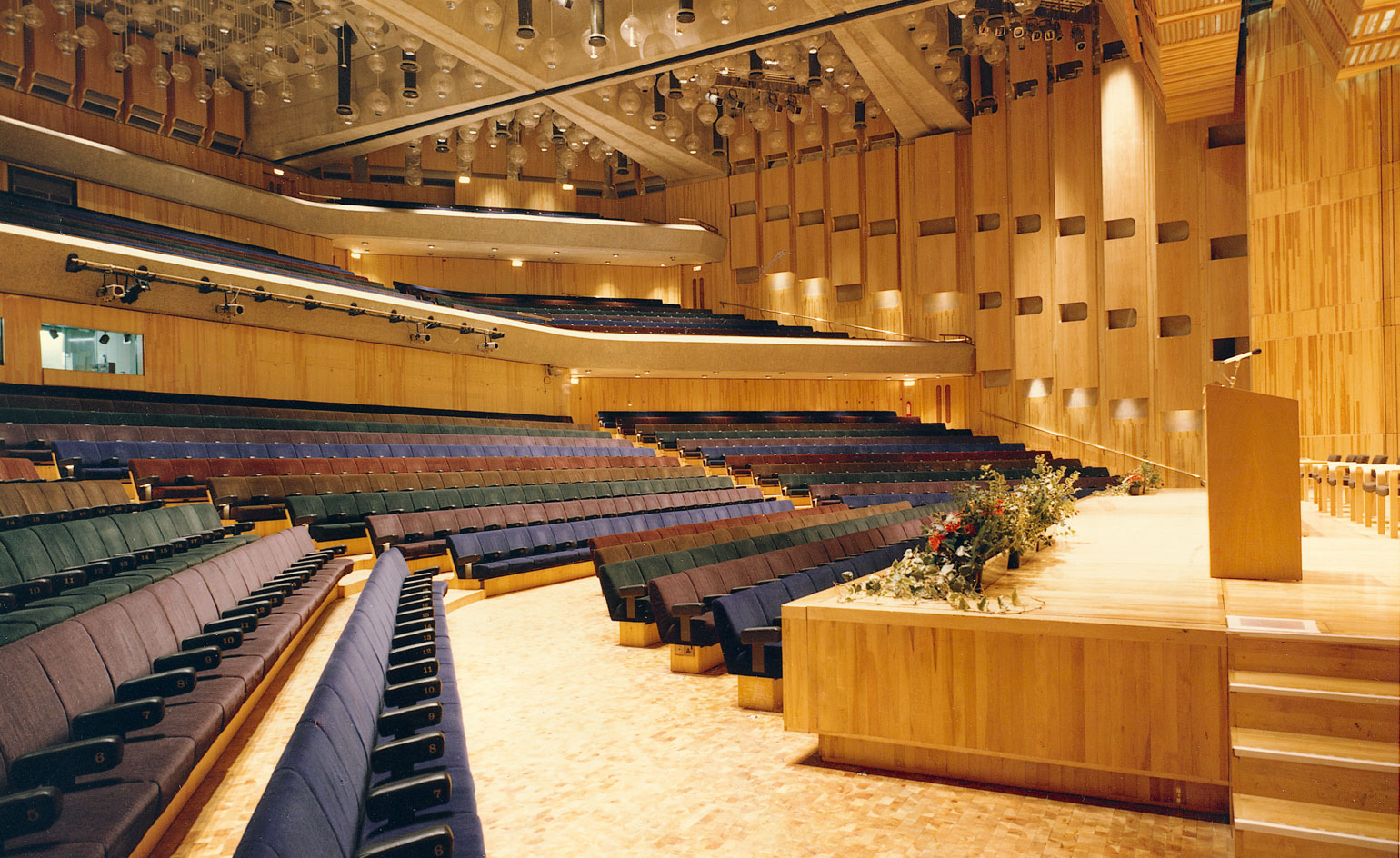
The Day-designed Barbican Centre concert hall seating, 1981 Courtesy of the Barbican Centre

Robin Day’s ubiquitous 'Toro' bench (seen here in 1990) is still in constant use on London Underground platforms. Courtesy of DDP Studios Hemel Hempstead and the Robin and Lucienne Day Foundation
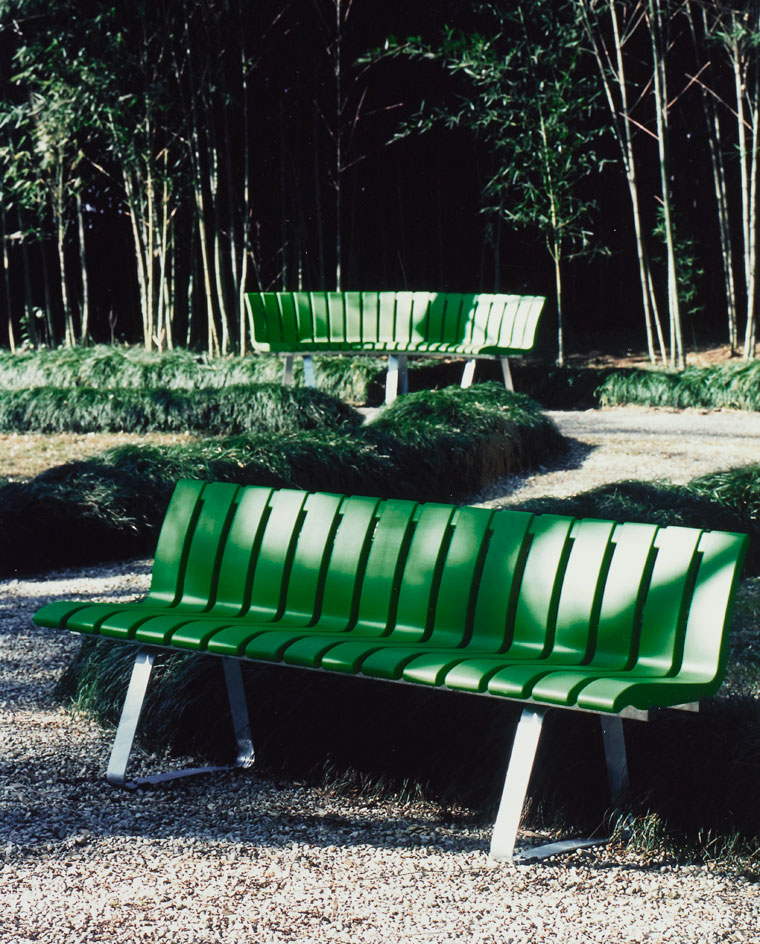
This 'Sussex Bench', 2003, was designed for Magis when Day was in his late 80s. Courtesy of Magis and the Robin and Lucienne Day Foundation
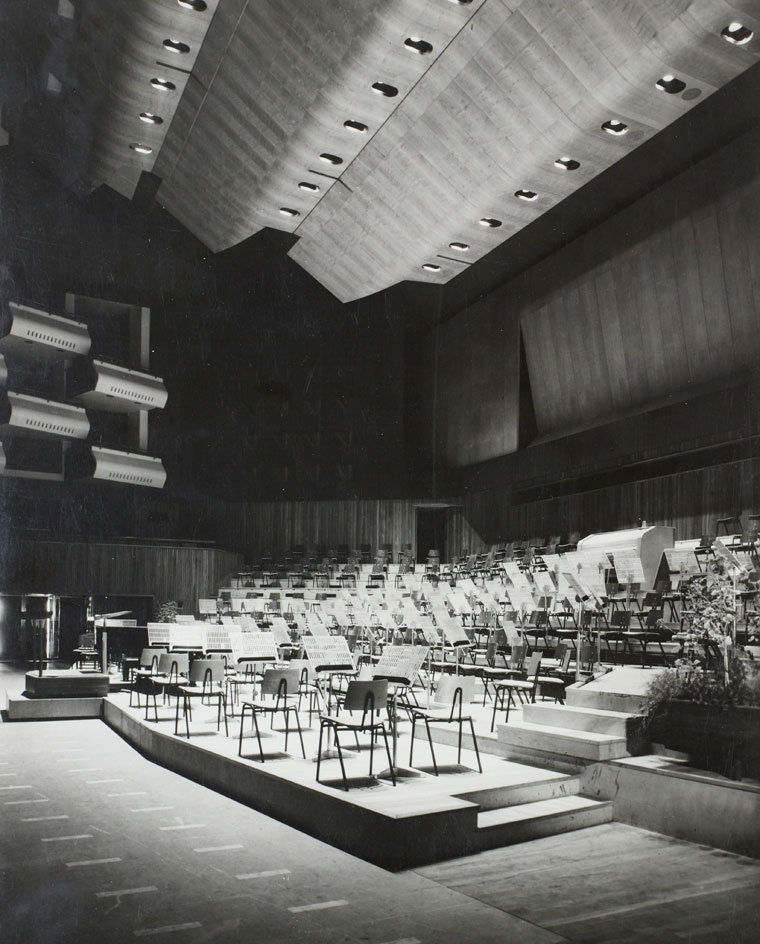
After more than 60 years, Day's Royal Festival Hall auditorium seating is still in use. Courtesy of the Robin and Lucienne Day Foundation
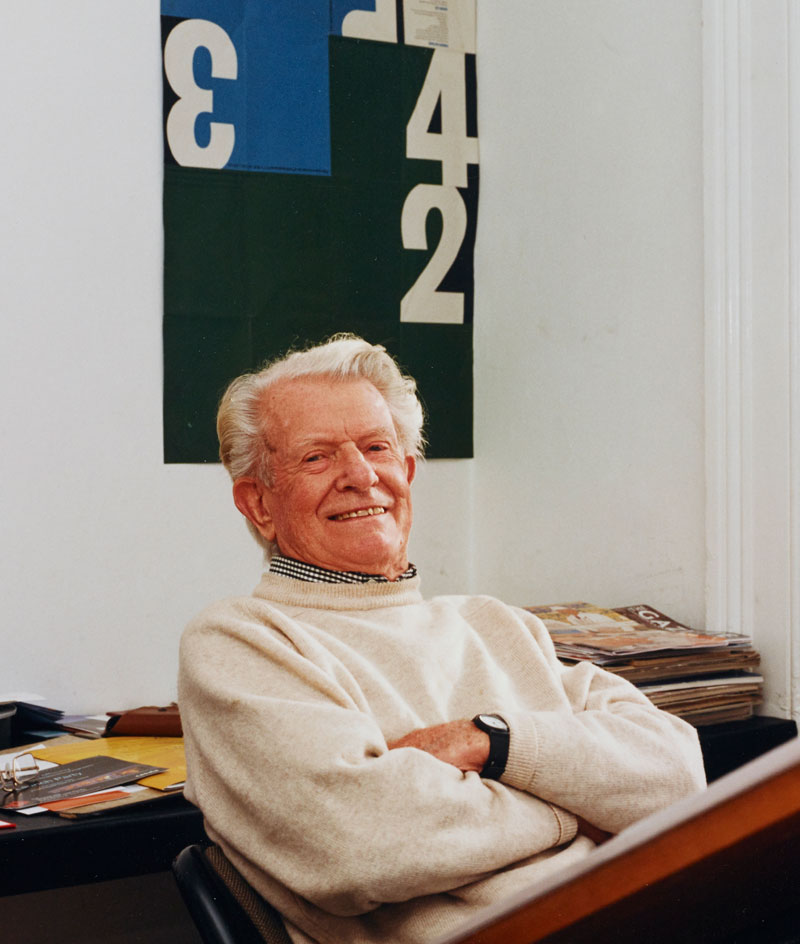
Robin Day in his studio in the 1990s. Courtesy of the Robin and Lucienne Day Foundation
ADDRESS
Wallpaper* Newsletter
Receive our daily digest of inspiration, escapism and design stories from around the world direct to your inbox.
Twentytwentyone
274 – 275 Upper Street
London, N1 2UA
Tom Howells is a London-based food journalist and editor. He’s written for Vogue, Waitrose Food, the Financial Times, The Fence, World of Interiors, Time Out and The Guardian, among others. His new book, An Opinionated Guide to London Wine, will be published by Hoxton Mini Press later this year.
-
 Put these emerging artists on your radar
Put these emerging artists on your radarThis crop of six new talents is poised to shake up the art world. Get to know them now
By Tianna Williams
-
 Dining at Pyrá feels like a Mediterranean kiss on both cheeks
Dining at Pyrá feels like a Mediterranean kiss on both cheeksDesigned by House of Dré, this Lonsdale Road addition dishes up an enticing fusion of Greek and Spanish cooking
By Sofia de la Cruz
-
 Creased, crumpled: S/S 2025 menswear is about clothes that have ‘lived a life’
Creased, crumpled: S/S 2025 menswear is about clothes that have ‘lived a life’The S/S 2025 menswear collections see designers embrace the creased and the crumpled, conjuring a mood of laidback languor that ran through the season – captured here by photographer Steve Harnacke and stylist Nicola Neri for Wallpaper*
By Jack Moss